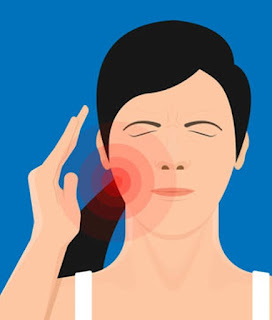The risk of myocarditis in younger males is higher following COVID-19 vaccination than infection
In younger men <40 years the risk of myocarditis was shown to be higher after vaccination than SARS-CoV-2 infection.
Between December 1, 2020, to November 15, 2021 a total of 42,200,614 people were
vaccinated with at least one dose of ChAdOx1 (n=20,646,456), BNT162b2 (n=20,391,600) or
mRNA-1273 (n=1,162,558) in England. Of these, 38,347,981 received
two doses of either ChAdOx1 (n=20,059,058), BNT162b2 (n=17,294,004) or mRNA-1273
(n=1,039,919) and 10,978,507 people received a third dose of ChAdOx1 (n=35,608), BNT162b2
(n=10,599,183) or mRNA-1273 (n=343,716). Amongst people receiving at least one vaccine
dose, 5,185,772 (12.3%) tested positive for SARS-CoV-2; 2,834,579 (54.7%) prior to vaccination,
698,993 (13.5%) after a first vaccine dose, 1,604,087 (30.9%) after a second vaccine dose and
48,113 (0.9%) after a third vaccine dose. Of the 42,200,614 persons included in the study
population, 2,539 (0.006%) were hospitalized or died from myocarditis during the study period;
552 (0.001%) of these events occurred during 1-28 days following any dose of vaccine.
Despite more myocarditis events occurring in older persons, the risk following COVID-19
vaccination was largely restricted to younger males aged less than 40 years, where the risks of
myocarditis following vaccination and infection were similar. However, the notable exception
was that in younger males receiving a second dose of mRNA-1273 vaccine, the risk of
myocarditis was higher following vaccination than infection, with an additional 101 events
estimated following a second dose of mRNA-1273 vaccine compared to 7 events following a
positive SARS-CoV-2 test.
Risk of myocarditis following sequential COVID-19 vaccinations by age and sex
Abstract
In an updated self-controlled case series analysis of 42,200,614 people aged 13 years or more, we evaluate the association between COVID-19 vaccination and myocarditis, stratified by age and sex, including 10,978,507 people receiving a third vaccine dose. Myocarditis risk was increased during 1-28 days following a third dose of BNT162b2 (IRR 2.02, 95%CI 1.40, 2.91). Associations were strongest in males younger than 40 years for all vaccine types with an additional 3 (95%CI 1, 5) and 12 (95% CI 1,17) events per million estimated in the 1-28 days following a first dose of BNT162b2 and mRNA-1273, respectively; 14 (95%CI 8, 17), 12 (95%CI 1, 7) and 101 (95%CI 95, 104) additional events following a second dose of ChAdOx1, BNT162b2 and mRNA-1273, respectively; and 13 (95%CI 7, 15) additional events following a third dose of BNT162b2, compared with 7 (95%CI 2, 11) additional events following COVID-19 infection. An association between COVID-19 infection and myocarditis was observed in all ages for both sexes but was substantially higher in those older than 40 years. These findings have important implications for public health and vaccination policy.
Martina Patone, Winnie Xue Mei, Lahiru Handunnetthi, Sharon Dixon, Francesco Zaccardi, Manu Shankar-Hari, Peter Watkinson, Kamlesh Khunti, Anthony Harnden, Carol AC Coupland, Keith M. Channon, Nicholas L Mills, Aziz Sheikh, Julia Hippisley-Cox Risk of myocarditis following sequential COVID-19 vaccinations by age and sex medRxiv 2021.12.23.21268276; doi: https://doi.org/10.1101/2021.12.23.21268276
More recent papers came to the same conclusions:
Patone M, Mei XW, Handunnetthi L, Dixon S, Zaccardi F, Shankar-Hari M, Watkinson P, Khunti K, Harnden A, Coupland CA, Channon KM. Risk of myocarditis after sequential doses of COVID-19 vaccine and SARS-CoV-2 infection by age and sex. Circulation. 2022 Sep 6;146(10):743-54.
Retrospective cohort study of 196,992 adults in Israel did not observe an increased incidence of neither pericarditis nor myocarditis in unvaccinated adult patients recovering from COVID-19 infection.




Comments
Post a Comment